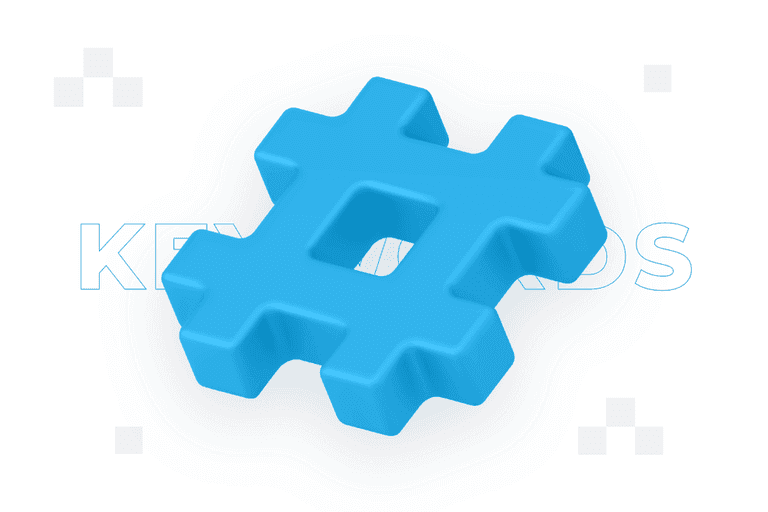Table of contents

Touchpoints – what are the digital touchpoints between the consumer and the brand

The overall experience of interacting with your brand is crucial to your customers’ purchasing decision. Therefore, you need to assess and optimise every possible digital touchpoint so that it brings real value to the recipient. If you want to arouse customer interest in your brand, you must first and foremost know where and when a potential customer ‘sees you’ online. It is not just about the products you sell, but every step that contributes to brand recognition.
What are touchpoints?
The concept of ‘touchpoints’ in marketing was defined by Don Peppers and Martha Rogers, who are known as the creators of the Customer Relationship Management (CRM) concept. In their 1993 book ‘The One to One Future’, Peppers and Rogers used the concept of ‘touchpoints’ to describe every interaction between a company and a customer that takes place throughout the customer lifecycle.
According to Peppers and Rogers, touchpoints are all points of contact where a customer comes into contact with a brand or product, including advertising, websites, marketing activities, sales, customer service and more. All of these touchpoints influence the way a customer perceives a brand, and thus their purchase decision and brand loyalty.
Research indicates that the number of touchpoints that should be used in a marketing strategy depends on a number of factors, such as industry, market, target audience, marketing objectives and budget. There is no universal number of touchpoints that is appropriate for every company.
One study by Salesforce indicated that the average number of touchpoints used in marketing strategies is around 6-8. However, for certain industries or target groups, this number can be significantly higher or lower.
When a customer decides to make a purchase from your online shop, he or she goes through several steps – from building brand awareness to making the final purchase. These steps and processes are part of what we call the customer journey or marketing funnel. It consists of a number of individual points where an online user can encounter your brand – these are the touchpoints. Some of these are directly influenced by you (e.g. your website) and some are not necessarily influenced by you (e.g. a company opinion on a forum).
In which (example) places will a customer most often come into contact with your brand?
Online advertising
Online advertising, such as Google Ads or Facebook Ads, is one of the touchpoints that can attract new traffic to your website. If you want people to click on your ad, it is important to create a creative that catches the attention of potential buyers and encourages them to take action.
Content marketing
Relevant and useful content published by a brand to gain the attention and engagement of its audience. If it responds to their Google search intent, it will prove easy to find. This could be an informative blog post, but also a photo on Instagram with an interesting background story.
Content can also help you develop a customer retention strategy – this is one way to further engage people who have already bought from your shop.
Influencer marketing
If you invite an online celebrity, or Influencer, to promote your brand, their actions will also be the point where the customer comes into contact with your brand.
User-generated content (UGC)
Any form of online content from individual users rather than paid professionals or brands. Consumers are 2.4 times more likely to perceive such content as authentic compared to brand-generated content.
Companies using UGC can also build customer loyalty and trust by showing that they are putting them – the community centred around their brands – first.
Online reviews
One of the most important aspects of any online shop that heavily influences customer decisions is online reviews. Most customers will be more likely to buy a product that comes with reviews from existing customers, as they want to see if people who have actually bought and used the product liked it (or not) and why.
So try to encourage customers to leave a review of the product after they have made a purchase. Check your product reviews and respond to them regularly if anything hasn’t worked as it should and the customer is not happy.
Social media
Social media platforms can provide the kind of results for your online shop that other channels cannot. Although they are mainly used for communication and customer retention, platforms such as Facebook and Instagram have powerful online shopping features, including one-click shopping.
Sales aggregators
Some companies can benefit from listing their products on third-party marketplaces, such as Amazon or Allegro. So-called marketplaces will allow your business to reach more customers and also help you deal with some aspects of e-commerce, such as shipping and payment.
Customer experience in terms of fulfilment
Refers to the entire process of packaging, shipping of the product and collection by the customer. The fulfilment process affects your customer’s shopping experience and may be what influences subsequent orders or lack thereof.
A company should therefore ensure the best quality fulfilment by making sure it uses an affordable shipping service, while maintaining the customer’s delivery time expectations.
It is a good idea to use a tracking system to notify customers of the shipping process of their order. Updating your shipping process in a timely manner will help you gain the trust of your customers.
Feedback surveys
Feedback surveys are usually sent to customers after they have purchased a product or service. A feedback survey is primarily designed to obtain detailed information about customers’ experiences of using your product and to use this as a basis for future improvements.
Using a feedback survey can also be a safe option when you receive negative feedback, as the scenario allows you to address it immediately. Try to personalise any survey request you send to a customer to show that you care about their feedback. Don’t forget to respond to any suggestions.
Thank you mailing
Sending a thank you email after a customer takes an action (such as making a purchase or completing a feedback survey) can be a great way to establish a positive relationship.
Product catalogues and web pages
Product catalogues and online shop pages are often one of the last stages of the customer journey and the right place to encourage someone to buy your product. Conversely, a bad product page can cause a discouraged customer to direct their steps to a competitor.
Touchpoints vs. the (successful) purchase path
By identifying and ensuring the quality of all the touchpoints at which a user comes into contact with your brand, you can increase the chances of them becoming a satisfied customer. Since we cannot influence all of them directly, it is so important to take care of the right brand image. Comprehensive E-commerce marketing activities will make sure that every customer contact with even the slightest mention of the brand has a chance of ending in a conversion.
Contact form
Develop your brand
Rate content:
You may be interested in:






